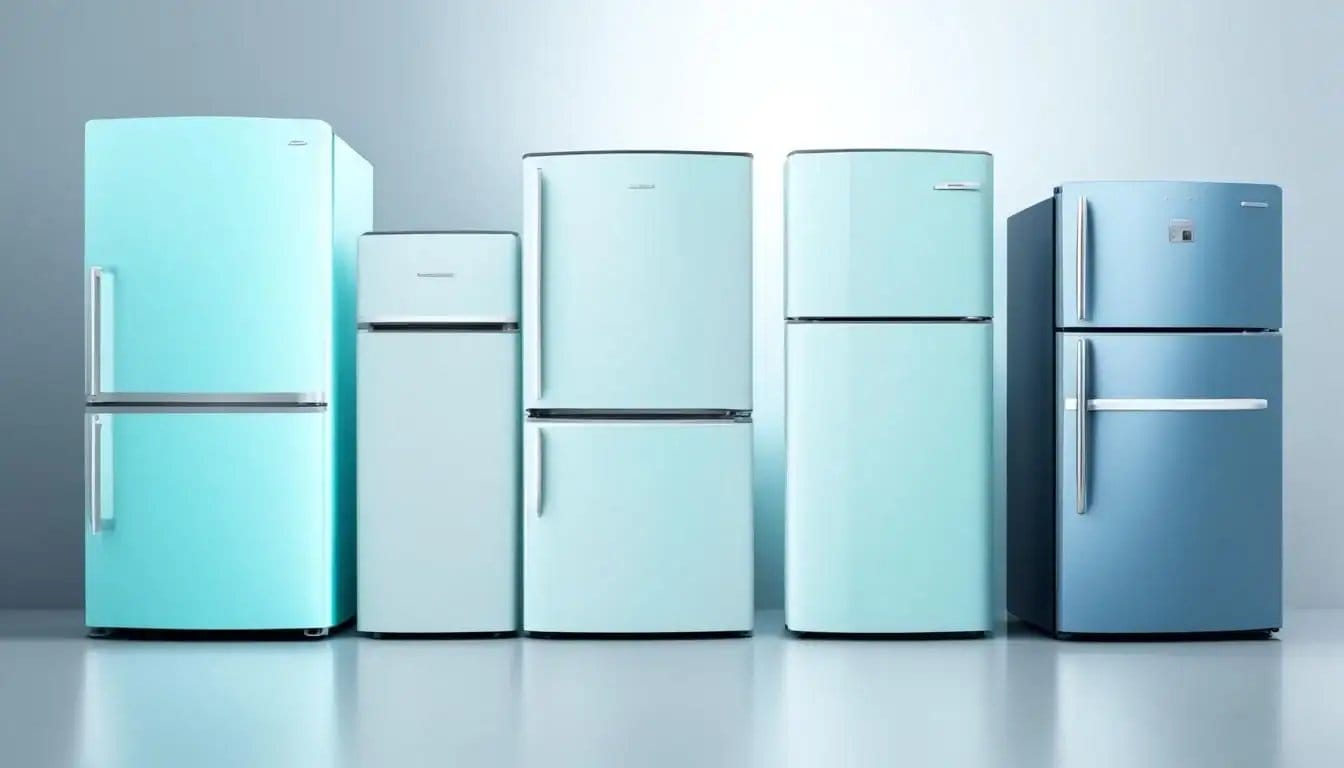A mini fridge is a convenient appliance for offices, dorm rooms, and small spaces. But how many watts does a mini fridge use?
According to various sources, the wattage of a mini fridge ranges from 50 to 100 watts. On average, a mini fridge uses between 233 and 310 kilowatt-hours (kWh) of electricity per year.
The actual wattage depends on factors such as the size of the mini fridge, the insulation quality, and the age of the appliance.
Understanding the power consumption of a mini fridge is important for optimizing energy usage and reducing electricity bills. Let’s check further details!
Key Takeaways:
- A mini fridge typically uses between 50 and 100 watts of power.
- On average, a mini fridge consumes between 233 and 310 kilowatt-hours per year.
- The wattage can vary based on factors like size, insulation quality, and age.
- To determine the wattage of your mini fridge, check the sticker or user’s manual.
- Reducing energy usage can be achieved by keeping the fridge clean and avoiding frequent door openings.
How To Know The Wattage Of Your Mini Fridge
When it comes to understanding the power consumption of your mini fridge, determining its wattage is essential. There are a couple of methods you can use to find out the wattage of your specific appliance.
Method 1: Check The Sticker On The Fridge
- Most mini fridges have a sticker on the back or side that provides technical information about the appliance.
- Look for details such as volts (V) and amps (A). These values are necessary for calculating the wattage.
- To determine the wattage, multiply the volts by the amps:
Volts (V) x Amps (A) = Wattage (W)
Method 2: Refer To The User’s Manual
- If you don’t find a sticker on your mini fridge, another source for wattage information is the user’s manual.
- Check the manual that came with your appliance for specifications and technical details. Look for a section that mentions wattage or power consumption.
- Once you have determined the wattage of your mini fridge, you can calculate its power consumption over a given period.
- Whether you want to know the daily, monthly, or annual energy usage, the process remains the same.
- Simply multiply the wattage by the number of hours the mini fridge runs and convert it to kilowatt-hours (kWh) using the formula: 1,000 watt-hours = 1 kilowatt-hour (kWh)
Calculation examples:
| Wattage Of The Fridge | Number of Hours | Energy Consumption (kWh) |
|---|---|---|
| 75W | 24 hours | 1.8 kWh |
| 75W | 1 month (= 30 x 24) | 54 kWh |
| 75W | 1 year (= 365 x 30 x 24) | 657 kWh |
Factors Affecting Mini Fridge Power Consumption
Several factors can affect the power consumption of a mini fridge. Consider these factors to optimize energy usage and ensure efficiency.
1. Size Of The Fridge
The size of a mini fridge plays a significant role in power consumption.
- Generally, larger models tend to use more watts compared to smaller ones.
- If you’re looking to minimize energy usage, consider opting for a smaller-sized mini fridge that meets your needs.
2. Insulation Quality
The insulation quality of a mini fridge directly impacts its energy efficiency.
- Mini fridges with better insulation can maintain the desired temperature more effectively, resulting in lower power usage.
- When purchasing a mini fridge, look for models with high-quality insulation that can help reduce energy consumption.
3. Age Of Mini Fridge
The age of a mini fridge can also affect its power consumption.
- Older models may not be as energy-efficient as newer, more advanced ones.
- Newer mini fridges often come with energy-saving features and technology that can help minimize power usage.
- If you have an older mini fridge, it might be worth considering an upgrade to a more energy-efficient model.
4. Load Capacity
Overloading a mini fridge with food and drinks can strain the motor and lead to increased power consumption.
- Ensure that you don’t exceed the recommended load capacity of your mini fridge.
- By managing the load properly and not overcrowding the fridge, you can help maintain optimal energy usage.
Considering these factors can help you make informed decisions when it comes to choosing and using a mini fridge, allowing you to reduce power consumption and energy costs.

Tips For Reducing Mini Fridge Energy Usage
By reducing power consumption, you not only save on energy costs but also contribute to a more sustainable environment. Implementing a few simple and practical tips can make a significant difference.
- Avoid frequent opening of the fridge door: Every time you open the door, cool air escapes, and the compressor has to work harder to maintain the desired temperature. By reducing the number of times you open the fridge, you can minimize energy usage and help the appliance operate efficiently.
- Place the mini fridge away from heat sources: Placing your mini fridge near heat sources, such as direct sunlight or other appliances that generate heat, can cause it to work harder to cool down. Keep your fridge in a location where it is shielded from heat, ensuring optimal performance and energy efficiency.
- Keep the coils clean: Over time, dust and debris can build up on the coils located at the back of the fridge. This buildup reduces the efficiency of the cooling process and forces the appliance to consume more electricity. Regularly clean the coils to maintain optimal efficiency and minimize energy consumption.
- Avoid ice buildup inside the fridge: Ice buildup on the back wall of the mini fridge can hinder proper airflow, leading to increased power consumption. Defrost your fridge regularly to prevent excessive ice buildup and ensure efficient cooling.
- Upgrade to an energy-efficient mini fridge: If you’re using an older model that lacks energy-efficient features, it may be time to consider investing in a newer, energy-star rated mini fridge. These models are designed to minimize power consumption without compromising performance, offering a greener and more cost-effective solution.
Embracing these tips, you can enjoy the convenience of a mini fridge while minimizing your environmental impact and saving on energy costs.
Bottom Line
Overall, with an average wattage ranging from 50 to 100 watts, mini fridges consume approximately 233 to 310 kilowatt-hours per year.
To enhance your mini fridge’s efficiency and reduce electricity expenses, determine the appliance’s wattage while considering its size, insulation, and maximum load capacity.
Being aware of the power usage specifics of mini fridges, applying energy-saving practices, you can reduce power consumption and contribute to a more sustainable and cost-effective lifestyle.
Happy cooling!
FoodiesFridge









